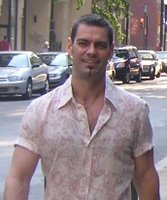Stanford in the 60s (and early 70s)
Read the full article here.In many ways, Stanford’s experience was the same as that of other campuses. The same self-destructiveness that was noted elsewhere was visible at Stanford on the far Left. As has been said of the Weathermen, there was “a moral urgency that precluded consideration of political effectiveness and a desire to display one’s personal commitment, especially if it involved risk or injury.”
There was the distrust of hierarchy that made it so difficult for leaders to be effective; “participatory democracy” was supposed to replace leadership with consensus, even if it meant that deciding what to do next required endless—and endlessly tedious—meetings....
... Universities have been spawning grounds for riot and strife, and sometimes revolution, for centuries and in many countries. Young people have energy to burn. Many tend to act first and think later. The urge to tell your elders that the whole system is a fraud and in one way or another to act accordingly is never entirely dormant. The campus, with its concern for free debate and its cherished self-image as the place in all of society most tolerant of deviance and controversy, is a natural home for protest....
Some barriers were broken in those years that have never been restored. Civility returned, for the most part, but formality did not, for better or for worse—mostly I would agree that it’s for the better, but there is more to be said for adhering to some prescribed forms of behavior than our culture is generally willing to admit.
Although by 1970 there was widespread agreement that violence, even in pursuit of what the perpetrators considered noble goals, was not to be tolerated, if we could figure out ways not to tolerate it, there was far less readiness to condemn coercive tactics, such as preventing the University from functioning by blocking entrance to its facilities. However irrational political processes may be, they are not made any more rational by that sort of behavior.
Rationality itself was widely scorned in the 1960s and suffered setbacks. It has never entirely regained its place in its supposed Temple, the university.
Labels: history





0 Comments:
Post a Comment
<< Home